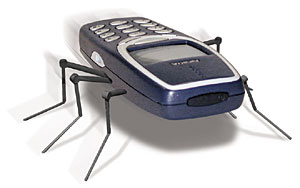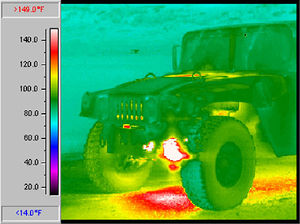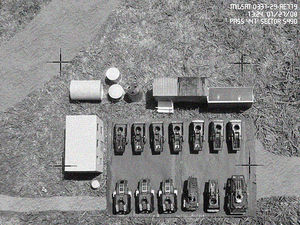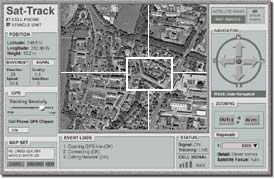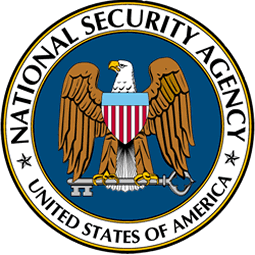T17 Group3
Project Page
Contents
Electronic Surveillance
Introduction
In today’s technology driven society privacy concerns regarding national security methods is a rising and demanding issue. Electronic Surveillance is one of the many technologies used to promote national security and has already proven itself useful in the past and present. It has been used in the form of audio, visual, and data surveillance utilized by the government, military, and security agencies to prevent terrorism, attacks, fraud, and illegal actions. However, where is the line drawn between protecting people and invading their privacy? In the following arguments presented below we have explored both sides of the rising controversy over national security and privacy invasion while looking at the benefits offered from electronic surveillance. We will explore the uses and evolution of electronic surveillance throughout the last century as well as the different types and the issues that each one raises.
Electronic Monitoring In the History Books
Though this topic has become an uprising issue in society within the like of the past decade, it is found to has cause a stir in the courtrooms throughout the years of the past. Though the technology may not have been as advanced as it was now we can find cases in the records of the U.S courtroom as far back as 1928. The case of Olmstead vs. U.S government was to be one of the first recorded in the history books. The court ruled in favour of the government stating that even though they had tapped the phone line, due to the fact that they had done so on the line outside of the residents home there was no invasion of privacy to be found. Now in the present year, technology has become vastly intellegent and almost endless in its possibilities, yet it has also fallen into the widespread arms of the public.
Type of Electronic Surveillance
Audio Monitoring
Roving Bugs
How far is too far though? Finding a missing person or tracking ones where about has significant advantages. But is listening to a personal conversation an invasion of privacy? FBI “Roving Bugs” in cellular device’s have blown the doors off the invasion of personal privacy. It has became a technological advancement enabling the government ability to remotely turn the microphone of selected cell phones on at any time and listen in on the conversation. This certain form of electronic surveillance opens the door for the monitoring of public communication.
“The surveillance technique came to light in an opinion published this week by U.S. District Judge Lewis Kaplan. He ruled that the "roving bug" was legal because federal wiretapping law is broad enough to permit eavesdropping even of conversations that take place near a suspect's cell phone.”
-http://www.thechicagosyndicate.com/2006/12/roving-bug-in-cell-phones-used-by-fbi.html
The possibilities have become endless so to speak when government officials have found new ways of even enabling the “roving bug” when the cell phone is turned off. And more still certain brands are to be more susceptible than others, studies have shown that providers such as Nextel , Samsung and worse still the once coveted Motorola RAZR have certain software downloads that allow an outside source to access the phone simply through the computer with no physical contact what so ever and enable the microphone.
Phone Taps
Phone taps are used in the United States more than any other country. The National Security Agency(NSA) in the USA has a system called ECHELON which is hooked up to every phone and internet account in the country. It is a computer based program that filters every call and email looking for key words or phrases such as "bomb", "hijack", ect. It then tags the user and pulls up personal information on them until they are removed from the terrorist watch list which may take anywhere from six months to several years.
Laser-facilitated listening devices
This type of electronic surveillance is commonly used in military situations when the need to intercept frequencies being sent from enemy bases. Devices are set up to intercept the frequencies and decode them. This can be done using rifle mikes, and other remote equipment, which would include satellites.
Visual Monitoring
Infrared Sensing
Infrared sensing is an extremely scientific technology that is widely used in todays world. The government utilizes its capabilities in military excersises, police activity, and national security alike. In todays world it is very rare to find a police helicopter or military tank or airplane without some form of infrared sensors on it. The infared camera detects infrared energy also known as heat, converting it to an electronically enhanced image making it more visible to the naked eye. This new "thermal image" displays different calculated temperatures as a color range. This new display makes allows heat to be seen by the human eye. Many thermal cameras in todays workplace can perform varied calculations and tasks dealing with temperatures, making them extremely useful nowadays.
Night Vision
Night Vision encorporates certain aspects of infrared tecnology in order to achieve a similar goal. Night vision devices utilize the same low light spectrum, infrared, to produce an image, yet it does so producing a prodominently green image. The devices absorb the smallest amounts of light possible through the eyepiece then, magnify it to the greatest possible amount in order to produce an image that is understandable to the human eye. This technology gives humans the avaliablity of viewing what was once an impossible to see image in the dead of night.
Closed-circuit surveillance which is more often referred to as "security cameras" are used in almost every professional building including banks, malls, and convenience stores. It has proven useful in both preventing thefts, and identifying suspects from a scene by using a face recognition system which is computer based.
Satellite Imaging
Satellite imaging is frequently used in the military when visual confirmation and coordinates are needed of an enemy base. The use of a satellite is more effective than airplane photographs or the use of a patrol vehicle since it is harder to trace and not as obvious. Satellites today are sophisticated enough that they are able to capture fairly close-up photos or area and the coordinates as seen in the image on the right.
Data Surveillance
GPS Placement
The main form of Electronic monitoring is arguably cell phone placement. Every cellular product purchased by the consumer has the ability to be pinpointed on a global positioning system. How is this done one may ask? Well in theory it is a very practical and simple procedure. Location of a cell phone can be found based on power strengths being transmitted through the antenna. Now knowing that all cellular products will run off of the nearest available mobile tower, we had a relative location of the device. Though ranges do vary from population densities it has still proven to be a very useful method in today’s law enforcement industry.
National Security
The government and law enforcement’s ability to monitor suspicious activity has proved to have its benefits. Electronic Surveillance has been used as probation methods to monitor ex-cons. To ensure that they follow the probation rules and regulations phone taps and computer data monitoring (including email, internet site usage, and online communication site) are set to ensure that the subject does not make contact with members of organized crime or those affiliated with it.
As of October 26, 2001 President Bush Jr. signed the Patriot Act which gave power to law enforcement and government agencies access to almost unlimited electronic surveillance including audio, visual, and data surveillance. President Bush’s response to the suspension of civil rights and Liberties of American citizens was that “"The Patriot Act is a key part of [America’s] effort to combat terrorism and protect the American people"
Electronic Monitoring has proven useful in military situations. The method of communication monitoring was developed mostly during the Cold War. In today’s warfare techniques the ability to intercept and monitor the enemy’s communication is essential. The United States Army has access to some of the most advanced forms of audio and satellite surveillance. This allows the army to hear and have visual confirmation of the target and enemy bases.
The National Security Agency(NSA) after the Patriot Act has unlimited ability to monitory every call, email, fax, and computer data message, as well as internet searches and will tag any conversation that contains key words or phrases such as “bomb”, “hijack”, or “Al Qaida”. The computer system will then monitor the communication activity of the subject until the monitoring is released by a NSA or CIA official. This current system is called ECHELON which is the computer based system that goes through millions of calls and emails hourly.
Privacy Issues
When dealing with the monitoring of any type of personal electronic devices or even surveillance equiptment, the issue of personal privacy is virtually guruanteed to surface. So where do we draw the line? Naturally it is a government decision as to what amount of personal information can be disclosed to who and at what cost. The government of Canada has produced laws for exactly this situation. The Personal Information Protection and Electronic Documents Act was inforced by the Canadian government, it was implimented over a three year period starting on January 1st, 2001. This Act is however an extremely long and drawn out process in which many loop holes and backdoors can be obtained and manipulated. The strict deffinition of personal information is skewed through government fine print, therefore many problems arise through information shared between a select indivual and another firm or individual. The information being shared by the two parties, argued to be released by the individual and therefore said individual has "given up" the right to the privacy of this documentation or personal information.
Again we look at the quotation accompanying earlier discussed roving bugs,
“The surveillance technique came to light in an opinion published this week by U.S. District Judge Lewis Kaplan. He ruled that the "roving bug" was legal because federal wiretapping law is broad enough to permit eavesdropping even of conversations that take place near a suspect's cell phone.”
-http://www.thechicagosyndicate.com/2006/12/roving-bug-in-cell-phones-used-by-fbi.html
This is simply an example of the flaws of the government system regarding the privacy sector. The "broad" factor of this law makes it extremely easy to find a way to bypass the fact that an individuals personal privacy was being invaded in a conversation that was not intended for any audience but said individuals couterpart. In many defense cases it has become unclear of a way to prosecute for eavesdropping on conversations because through the loopholes of the governments law it has become very easy to cover up the fact that the spying was done with the intent of robbery of private information.
Conclusion
In conclusion, our team has decided that although there is definate evidence to support the fact that electronic has proven useful and resourceful in the past and present, we feel that the technologies available are being abused and taken to extreme levels of privacy invasion. People are faced with a serious lack of civil rights and liberties of privacy protected by both the Declaration of Independance and The Canadian Charter of Rights and Freedoms. We feel that personal information is too avialable both authorities and the public. Our suggestions to the system would be that continuing the use of electronic surveillance is a must especially in today's technology driven society, but to limit the amount and type of information available to the public, such as medical records, phone calls, and location.
References
Introduction:
http://news.bbc.co.uk/2/low/americas/4706031.stm
National Security:
http://www.fas.org/irp/program/process/echelon.htm
http://www.ncsl.org/programs/lis/cip/surveillance.htm
http://w2.eff.org/Privacy/Surveillance/Terrorism/20011031_eff_usa_patriot_analysis.php
http://news.bbc.co.uk/2/low/americas/4706031.stm
Types
http://en.wikipedia.org/wiki/Mobile_phone_tracking
http://www.tracerservices.com/cpl.htm
http://www.surveillance-source.com/Electronic_Surveillance.htm
http://www.isprs.org/publications/related/ISRSE/html/papers/215.pdf
http://en.wikipedia.org/wiki/Passive_infrared_sensor
http://www.flirthermography.com/about/how_infrared_cameras.asp
http://www.surveillanceissues.com/
Privacy Issues
